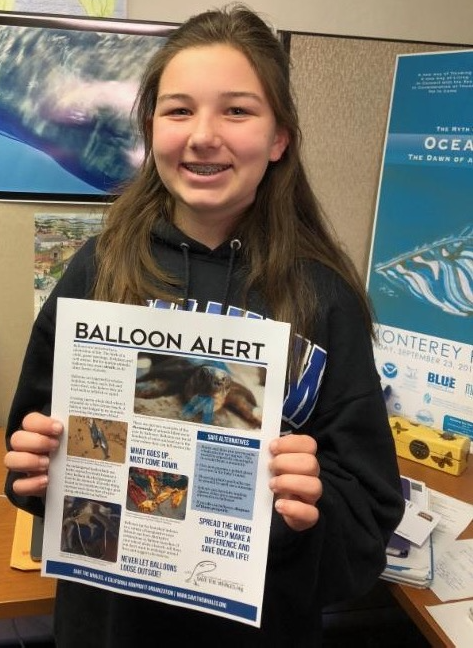|
|
|
|
Photograph of orcas in British Columbia by Maris Sidenstecker II.
We've lost a species; in China the baiji or Yangtze river dolphin. We are on the verge of losing others: in Mexico, the vaquita porpoise, and off the west coast of North Island In New Zealand, the Maui dolphin.
The baiji was doomed because it was not acted on soon enough and political indifference. We may see the same thing happen to the orcas. Most people do not realize we may lose the Puget Sound, WA iconic Southern Resident orcas (comprised of pods J, K. and L). They are starving to death as their main food supply
is disappearing.
An established and important connection exists between the abundance of salmon and the survival of orcas. One solution is to take down the dams that prevent the Chinook salmon from reaching the Pacific Ocean. The salmon that the orcas depend on are disappearing.
This means taking down dams on the lower Snake River at Ice Harbor, Lower Monumental, Little Goose and Lower Granite. These are all in Washington State.
The dams have been rendered obsolete because of time and economic realities. Power generation has declined to about 800 megawatts of power annually. The worst thing is that these dams are mass salmon killers and could drive the orcas to extinction.
Washington Governor Jay Inslee, and Washington Democratic Sen. Patty Murray have been asked to take action on the dams, but their measures have been ineffective.
Jim Waddell is head of Dam Sense, and they have tried to take administrative action to remove the dams. The Obama administration said a low-cost dam removal is doable. Senator Murray said the courts would look at the issue.
The courts did look at the issue, and Judge Simon said it was time to seriously consider removing these four dams. Observers are afraid that the ruling will only insure another inadequate plan causing delays past 2018 and into 2020 or later.
The orcas' time is running out.
_______________________________________________
Making a Difference
Become A Balloon Alert Ambassador!
 Avery is an 8th grade student who is making a difference. No matter where you live you can help marine life. How? By educating others in your community about the dangers of balloons to marine life. We invite you to become a Balloon Alert Ambassador!When balloons are released into the air, they can travel hundreds of miles before they pop over a waterway such as a lake, creek, stream, river, or ocean. Once in the water, they resemble food such as jellyfish. Sea turtles are especially vulnerable because their favorite food is jellyfish. Balloons and plastic bags floating in the water are mistaken for food. It is impossible for turtles to spit these out. Balloons kill whales and other marine life also.
Avery says: "The most gratifying thing about working with Save The Whales is knowing that there are people who are inspired by us and what we have to say. They learn about the issues our oceans face and feel inspired to make a change. Seeing that inspiration in people of all ages is truly beautiful."
__________________________________________
It is a difficult and dangerous time for whales. They are turning up in strange places as the ice melts and boundaries change or cease to exist. This is also a time of great danger for the North Atlantic Right Whales as they are being killed by ship strikes and unknown causes. All whales need our help if they are to survive.
Please sign petitions, call your elected officials, educate others, and do all that you can to keep our oceans clean.
Sincerely,
Maris Sidenstecker Co-Founder, Save The Whales A 501(c)(3) nonprofit corporation
Save The Whales Voted Top-Rated Nonprofit 2018
|
|
|
|
Dee, the
Beautiful Whale
 Children gathered under Dee's heart with our instructor, Amanda Good. |
Dee made two important appearances.
One was at Monterey's
Whalefest 2018, and the second was at the
opening of the
Monterey Conference Center.
Dee is our beautiful blow up humpback whale measuring 43 feet in length.
At Whalefest, over 900 people visited her, and they were wowed.
 Children love her lungs which are like ours, only much, much bigger. Children love her lungs which are like ours, only much, much bigger.
|
|
Sperm Whale in
|
Earlier this month, at Helena Symonds' and Paul Spong's research laboratory in British Columbia, they were listening for orcas when a sperm whale was heard clicking over the hydrophones.
Jared Towers, a whale researcher in the area, also heard it.
Then they lost it, but finally someone said at 12:36pm they could see blows to the west, and at 12:42pm texted that they had found both orcas and the sperm whale off Blinkhorn, an area in B.C. At 1:00pm the clicks became quite frequent and some-times loud.
As the clicks continued, Jared asked to be informed if and when the clicks stopped for 3+ minutes as he might expect the whale to surface again. And it did at 3:27pm not far from Jared. The whale fluked and dove out of sight. They did not hear him again that day.
As of March 1, 2018 he was still clicking away. Believed to be a juvenile male, the researchers named him Yukusam. It is the first time a sperm whale has been spotted off the coast of B.C. in decades.
|
| |
(c) Sperm Whale by Sally Bartel
________________
|
Give to Save The Whales
and by mail...
1192 Waring Street
Seaside, CA 93955
THANK YOU
|
|
|